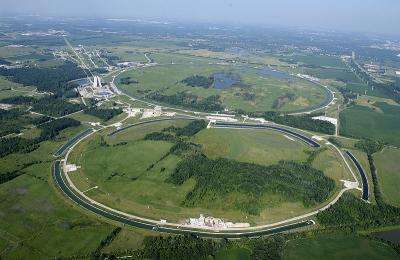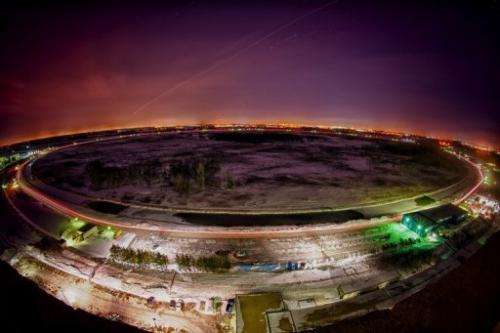Tevatron retires: The era of big American physics about to end

The era of big American physics ends Friday with the retirement of the Tevatron particle accelerator, which has been recreating the Big Bang under four miles of Illinois prairie for 25 years.
The Tevatron has been rendered obsolete by a more powerful atom smasher -- the world's largest -- built in the Alps on the French-Swiss border by the European Center for Nuclear Research (CERN), a consortium of 20 member nations.
It seems unlikely that the United States, which once dominated the field and reaped the rewards of discoveries and technological innovations, will be able to muster the resources to build the next big particle physics project.
Long-term funding is simply too hard to come by.
Instead, American physicists will concentrate on more precise -- and less expensive -- questions at home and work with CERN on high-energy projects like the search for the elusive 'God' particle.
"In our field we don't keep beating our heads if we have been outdone by another machine," said Pier Oddone, director of the Fermi National Accelerator Laboratory, which operates the Tevatron.
"The idea is we shift to those areas where we can make the greatest contributions to understanding," Oddone told AFP.
"Sometimes the biggest discoveries come from smaller projects."
The Tevatron's retirement comes at a difficult time for American science.
NASA flew its last space shuttle mission in July.
Government funding is being squeezed by a deep economic downturn and bitter budget battles on Capitol Hill.
And science itself has become politicized, with disbelief in evolution and human contribution to global warming now a litmus test for Republicans hoping to win the support of the party's conservative base.
Fermi's scientists say they cannot predict what the United States will lose by ceding high-energy physics to Europe.
The gains from Tevatron are far easier to quantify.

"The Tevatron has made phenomenal contributions to particle physics," said CERN's director general Rolf Heuer.
"Top of the list has to be the discovery of the top quark in 1995, but there are many more."
While expanding our understanding of the fundamental mysteries of the universe is a worthy accomplishment, the Tevatron has also led to a host of more concrete advances.
At the top of that list is the widespread use of magnetic resonance imaging (MRI) machines for medical diagnosis.
The superconducting wires used in MRI magnets were rare and prohibitively expensive until Fermilab essentially created an industry with Tevatron's demand for enough wire to circle the earth 2.3 times.
"No one imagined that there would be spinoffs that would eventually be important for saving your wife's life or your daughter's life or your grandmother's life through this medical imaging, yet that's exactly what happened," said Stuart Henderson, Fermilab's associate director for accelerators.
The next big discoveries at Fermilab could come from three new projects being funded in part by the $50 million that used to be spent every year on the Tevatron.
Scientists are currently building a dark energy camera, which will be able to scan the galaxy faster than any other telescope and aims to discover why the expansion of the universe is speeding up instead of slowing down.
They are also constructing the world's most powerful neutrino beam, which could help explain why the universe has more matter than antimatter and expand our understanding of its most abundant particles.
Project X -- if it secures funding -- aims to be the world's most intense proton accelerator.
"We're in a position here in the United States to really cement our leading role on unraveling the intensity frontier and Project X really provides a platform for us to do that over the next 20 to 30 years," Henderson said.
"If the US does not, I'm sure someone will pick it up and do it for us."
(c) 2011 AFP

















